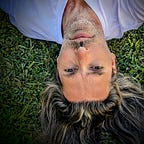Product Engineering — 2/4 Whose Work Is It?
Once the desired impact has been defined it is very tempting to unleash your entire arsenal of LEAN, Design Sprint or your current favourite method of ideation and prototyping onto your objective in order to get the first results out. Right?
Yes, we have been there too. It is a lot of fun and deeply rewarding letting our gut guide us in defining our hypothesis for building our product. But somewhere inside we know that this is wrong or at least a shaky foundation to build a product on. Right?
In our quest to bridge the gap between the Dent In the Universe and the fun of building, iterating, producing we dug deep to find best practices. With the help of grit, endurance and serendipity we got lucky in an unlikely place. We found the Ronald Heifetz at Harvard on leadership.
Heifetz differentiates between two types of challenges — technical challenges and adaptive challenges. A technical challenge is anything that has a known outcome and process to this outcome. Getting there requires a type of leadership called management.
An adaptive challenge on the other hand is all about changing the way a system works, how it expresses itself in the world, what dent it makes in the universe.
The adaptive leader looks at the current state of the system and at the desired state of the system and compares the advantages and disadvantages the actors or stakeholders in the system have now and then. Bridging the gap between the two gives a solid understanding of what he calls adaptive work.
We developed "Adaptive Work Modeling” on the basis of this. It allow us to use the output of the “Desirable State Modeling” to create a solid foundation and prioritisation for hypothesis that can then be explored in the next step — Product Engineering — 3/4 Getting Real (coming soon)
